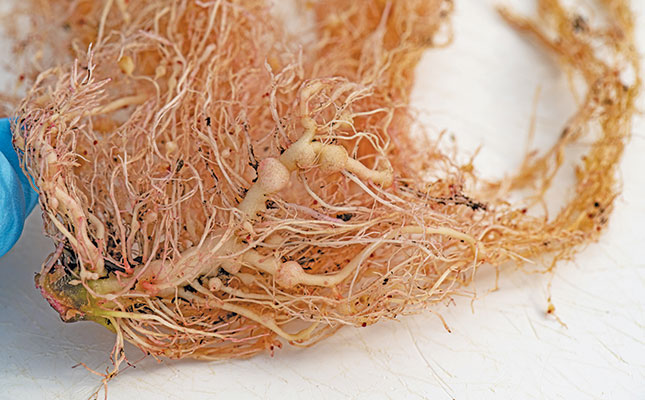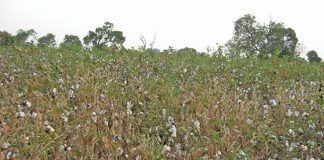
Photo: USDA
Potatoes (and many other vegetables) are vulnerable to eelworm. The most common species of this pest found in South Africa are Meloidogyne incognita, M. javanica and M. hapla.
These are what are commonly known as root knot nematodes, and are easily identified by round lumps on the small roots and larger raised lumps on the surface of the tubers. The latter will result in your potatoes being downgraded.
Apart from this, eelworm reduces crop yield by restricting the uptake of water and nutrients.
Another common species is the lesion eelworm (Pratylenchus penetrans). The symptoms of this species are dark to reddish brown sections on the roots and small round to irregular shapes on the tuber skin close to maturity. Its presence also renders the crop more vulnerable to verticillium wilt.
The potato cyst eelworm (Globodera rostochiensis) is a less common species, being found only in certain parts of South Africa. It is extremely destructive and you are legally required to report its presence to the Department of Agriculture, Land Reform and Rural Development. The area will then be quarantined.
Eelworm is considered one of the worst plant pests on earth due to the difficulty of controlling it and the wide range of plants that it targets.
Gardens and veld
The soil in many home vegetable gardens has high populations of eelworm, as most gardeners are unaware of its existence and don’t have the right chemicals to control the pest.
Don’t assume that virgin veld ploughed up for a new land contains no eelworm; I once saw a crop of carrots rendered unmarketable when a farmer made this assumption.
Many weeds and grasses host eelworm, but are still able to perform reasonably well. I have come across large infestations of root knot eelworm on the goosefoot weed (Chenopodium spp), yet the plant appeared quite normal.
Symptoms
With virtually no exception, the first signs of eelworm are irregular patches in the land, with plants showing water stress and having an unhealthy appearance while the rest of the crop looks vigorous and normal. If you see this, perform a thorough inspection of the roots.
Eelworm is a far greater hazard in lighter soils, where the gaps between the soil particles are larger; this allows for easier movement through the soil. Eelworm is essentially microscopic, but in the case of root knot eelworm, you can see the white, pear-shaped, egg-laden female if you break open one of the nodules.
Prevention and control
Regardless of the species, practise crop rotation to keep eelworm numbers down. Choose crops according to the eelworm species in your lands; this can be identified by submitting soil for analysis. In addition, examine the roots of every crop grown at removal or maturity to check the eelworm status.
Eelworm can be controlled by fumigating the soil or applying appropriate chemicals to the foliage; ask your crop chemical adviser for advice in this regard. Fumigation is usually applied through an implement which injects the product to the desired depth.
Bill Kerr is a vegetable specialist and a breeder of a range of vegetables.











